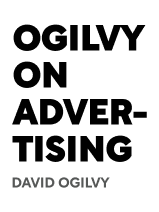

This article is an excerpt from the Shortform book guide to "Ogilvy On Advertising" by David Ogilvy. Shortform has the world's best summaries and analyses of books you should be reading.
Like this article? Sign up for a free trial here .
Do you want to know how to make a print ad? What goes into creating great ads?
Learning how to make a print ad requires strategy and creativity. You’ll need to take into account all the components that make up an ad, as well as research.
Keep reading to find out how to make a print ad.
How to Make a Print Ad
There are some steps for creating a good ad regardless of the medium. Here’s everything you need to know about how to make a print ad.
1. Learn about the product. It’ll be easier to make associations and come up with potential benefits when you have a solid knowledge base.
- For example, Ogilvy read about Rolls-Royce cars for three weeks before starting work on its campaign. As a result, he was able to write factual, informative ads and highlight special features.
2. Study your competitor’s ads. When you come across effective ads, study and copy the techniques used. Particularly study direct-response ads (ads that encourage consumers to contact a company directly to make a purchase) because these tend to be tested extensively.
3. Engage in consumer research. In particular, try to find out what product promise will most appeal to consumers.
4. Position your product. To “position,” determine what the product does and who the target audience is. This is step 4 in hour to make a print ad.
- (Shortform example: A pair of running shoes could be positioned as essential equipment for athletes, or a fashion accessory for teens.)
5. Choose a brand image. “Image” is the personality of a product, which stems from its inherent qualities as well as marketing variables such as price, packaging, and advertising style. Typically, cultivating a high-quality image works well, especially for products that are used in public. If your advertising is tacky or cheap, it will make your product look tacky and cheap, and people don’t want to be associated with these qualities.
- Example of how to make a print ad: Jack Daniel’s, Grand Dad, and Taylor whiskey all taste very similar. However, people who prefer one over the other do so because they like the image that’s associated with the brand. For instance, Jack Daniel’s projects an image of quality (it’s expensive).
6. Come up with big ideas. Big ideas will hook readers or viewers. They’re very hard to come up with—Ogilvy only had 20 throughout his entire career. Induce ideas by doing your research and then letting your mind unconsciously connect ideas as you go for a walk, drink, or take a bath.
In addition to being hard to come up with, big ideas are also hard to recognize, but if you can answer yes to the following questions, you’re on the right track:
- Is the idea idiosyncratic?
- Does it provoke gasps?
- Will it make other advertisers jealous?
- Does it mesh with the company’s growth strategy?
- Will it still be effective three decades from now? (Even running for five years is impressive.)
7. Spotlight the product and make it the star. If there’s nothing different or unique about your product compared to your competitors’ (for example, you sell table salt), make your advertising itself unique, or be extra clear and convincing. (You don’t have to convince people that your product is the best, you just have to convince them that it’s good. If you do this and explain yourself better than everyone else, it doesn’t matter if their product is better—people who are uncertain or confused will buy yours.)
8. Avoid working in committees. Committees tend to overcomplicate things and require compromise, and as a result, the final ad tends to say nothing of importance. Committees also slow down creation—it can take a committee up to half a year to come up with an agreed-upon campaign.
How Long Should You Run Your Ads?
Reuse your ads until they stop selling your product. You can usually repeat an ad at least four times without decreasing readership. This is because consumers aren’t all looking for the same product at the same time—the people who bought cars last year aren’t the same people looking for a car this year.
Two Audiences
In the following chapters, we’ll look at strategies for advertising products and services to two audiences as you learn how to make a print ad.
- Consumers. When advertising to consumers, the goal is to make a sale.
- Businesses (called business-to-business, trade, or industrial advertising). When advertising to a business, ads rarely close sales, so it’s more effective to use them as a stepping stone to create interest and attract qualified customers. 60% of specifiers—the people who decide what to purchase—read ads to decide what’s available and what they require.
(Shortform note: Ogilvy writes that most of the strategies that work for consumers also work for businesses. We’ve denoted the ones he specifically mentions for both business and consumer advertising with asterisks (*).)
Now that you know how to make a print ad, you can create great ads.

———End of Preview———
Like what you just read? Read the rest of the world's best book summary and analysis of David Ogilvy's "Ogilvy On Advertising" at Shortform .
Here's what you'll find in our full Ogilvy On Advertising summary :
- What the "father of advertising" has learned from his decades' of experience
- How to craft easy-to-understand ads that work
- The 6 pioneers of the advertising industry






